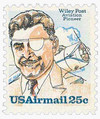
# C95 - 1979 25c Wiley Post
1979 25¢ Wiley Post
First City: Oklahoma City, Oklahoma
Quantity Issued: unknown
Printed by: Bureau of Engraving and Printing
Printing Method: Lithographed, engraved (Giori)
Perforation: 11
After seven months at the school, Post returned to Oklahoma and worked at a construction company. When World War I broke out, he wanted to become a pilot in the US Army Air Service. He joined a training camp at the University of Oklahoma and studied radio technology. However, the war ended before he completed his training. After that, Post worked in an oilfield, but the work was irregular and he briefly resorted to armed robbery. Post was arrested and spent over a year in jail, before being released in 1922.
Post began his flying career as a parachutist for a flying circus at age 26. In 1926, he lost his eye in an oilfield accident, but used the money to buy his first plane. It was around this time that Post met fellow Oklahoma native Will Rogers when he flew him to a rodeo. They developed a close friendship that lasted a lifetime.
Post piloted a Lockheed Vega airplane for a wealthy oilman. In 1930, Post flew the plane, nicknamed Winnie Mae, in the National Air Race Derby from Los Angeles to Chicago and won the race. He gained national attention and fixed his sights on bigger feats.
On June 23, 1931, Post and his navigator Harold Gatty took off from Long Island, New York, for a flight around the world. They finished their 15,474-mile trip in less than nine days. The previous flight in a Graf Zeppelin airship took 21 days.
In spite of this great accomplishment, Post often heard suggestions that Gatty had directed the effort, and earned more acclaim. Post set out immediately to prove his critics wrong. Equipping his plane with new technology – an early form of autopilot and a radio direction finder – he left Floyd Bennett Field in New York on July 15, 1933.
Post experienced some issues with the autopilot, but it did help him stay on course. And the radio direction finder allowed him to locate any radio station’s transmitter. Stopping in Berlin and the Soviet Union before returning to North America, Post completed the trip in 7 days, 18 hours, and 49 minutes – 21 hours faster than his previous record.
In 1934, Post began stretching the limits of human and airplane capability by experimenting with high-altitude flight. Because the cabin of Winnie Mae, which he owned by this time, wasn’t pressurized, Post worked with the B.F. Goodrich Company to develop the first pressure suit. It consisted of a layer of long underwear, a black rubber air pressure bladder, and an outside layer of parachute fabric. Rubber boots and a diver’s helmet completed the outfit. On his first flight, Post flew 40,000 feet in the air.
On August 15, 1935, Wiley Post and Will Rogers were flying in Alaska. Post was exploring the possibility of an airmail route to Russia. Rogers went along to gather material for his humorous newspaper column. They encountered bad weather near Point Barrow, Alaska, and crashed, killing both men instantly. Two monuments were later placed at their crash site, and the nearby Wiley Post-Will Rogers Memorial Airport was named in their honor.
There’s also an airport in Oklahoma named for Post and in 1997 he was inducted into the International Air and Space Hall of Fame at the San Diego Air and Space Museum.
Birth Of Will Rogers
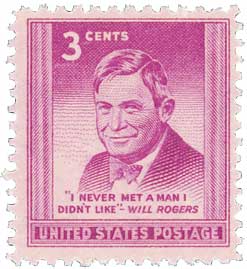
William Penn Adair Rogers was born on November 4, 1879, in Oologah, Cherokee Nation (present-day Oklahoma).
Rogers’ parents, Clement Vann Rogers and Mary Schrimsher, were both part Cherokee Indian. Rogers loved cowboys and horses and learned to ride and rope at a young age, earning a place in the Guinness Book of World Records for throwing three lassos at one time.
In 1901, Rogers and a friend traveled to Argentina hoping to find work as gauchos on a cattle ranch. When they failed to find work and lost all their money, they parted ways. Rogers then went to South Africa where he worked on a ranch before joining Texas Jack’s Wild West Circus.
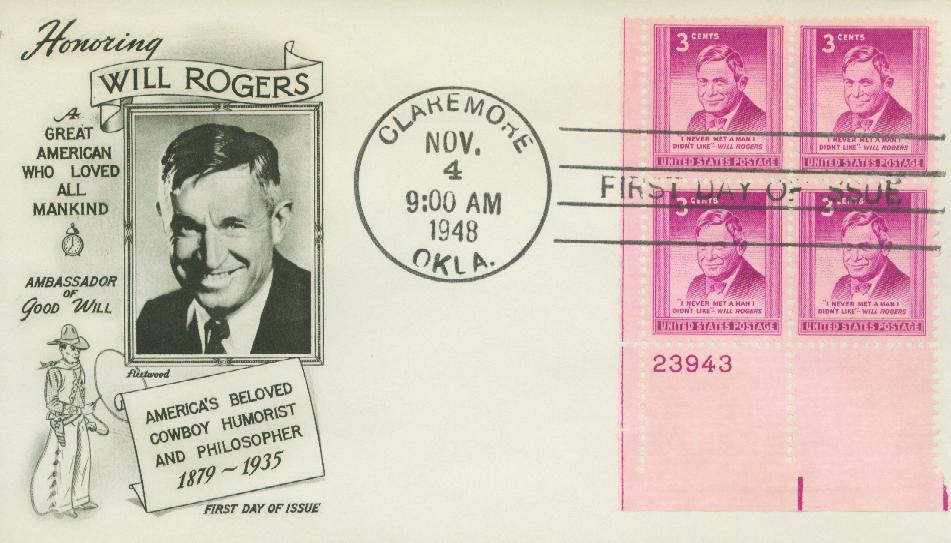
Rogers became a true showman during his time with Texas Jack. While Rogers created a roping and riding act, he learned a great deal about performing from Texas Jack, including what he thought was the secret to show business – leaving the stage early so the crowd would want more.
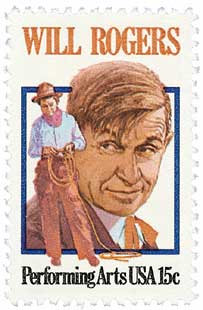
While Rogers enjoyed his time with Texas Jack, he was anxious to keep moving, so he traveled to Australia and joined the Wirth Brothers Circus. He continued to do his riding and roping and worked on a pony act. Rogers then returned to America in 1904, performing at the St. Louis World’s Fair. From there he got into vaudeville. During a performance in New York City, Rogers roped a steer that had broken free and climbed into the viewing stand. The story became front-page news, helping to make him more famous. He worked in vaudeville for the next 10 years. During this time he married and fathered four children, one of whom would become a World War II hero and later play his father in two movies.
In 1915, Rogers began performing in Florenz Ziegfeld’s Midnight Frolic. Rogers would take the stage in his cowboy outfit, twirling his lasso, and say, “Well, what shall I talk about? I ain’t got anything funny to say. All I know is what I read in the papers.” He’d then tell jokes about the news. His popularity earned him a spot at the Ziegfeld Follies, where Rogers did daring rides and lasso tricks. He also continued to fine-tune his satire, “roasting” Woodrow Wilson’s policies when the president attended one of his performances.
Rogers got into silent films in 1918 when he appeared in Laughing Bill Hyde. He moved west for a three-year Hollywood contract and also set up his own production company. Rogers enjoyed this, but silent films couldn’t capture the best part of his act. He did write a lot of the title cards for the films he appeared in, though.
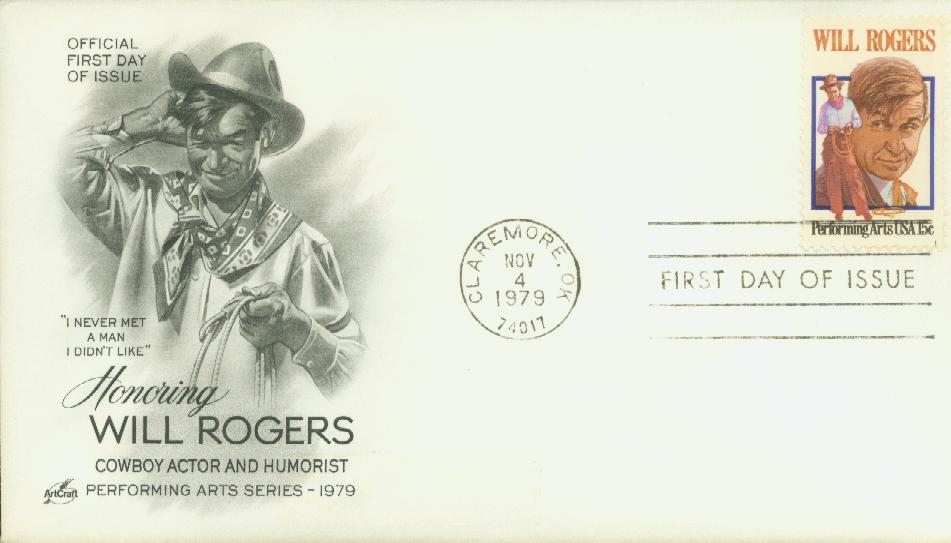
Rogers appeared in 48 silent films before he found his greatest success in sound films. His first was They Had to See Paris in 1929. Rogers went on to do 21 feature sound films with such stars as Boris Karloff, Hattie McDaniel, and Mickey Rooney. He worked with John Ford three times and often considered him to be his favorite director.
Audiences responded positively to Rogers’ performances, which still managed to include his ad-libbing and political commentaries. Plus, most of his films were family-friendly, so schools would often take students to see them.
In addition to acting, Rogers was also a talented speaker and writer. He was a regular on the lecture circuit and had a weekly column in the New York Times from 1922 to 1935. Beginning in 1926, his daily “Will Rogers Says” column was read by some 40 million newspaper readers. Rogers also wrote for the Saturday Evening Post and had another weekly column called “Slipping the Lariat Over.” And he produced a number of humor books over the years.
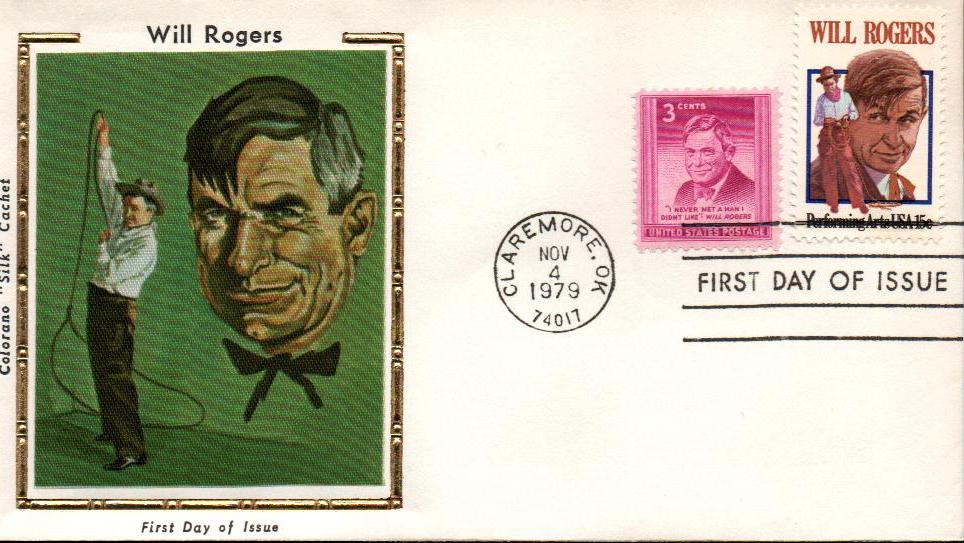
Beginning in 1929, Rogers started doing radio broadcasts for the Gulf Oil Company. The Sunday night show, The Gulf Headliners, was immensely popular. But Rogers had a tendency to lose track of time and talk beyond his half hour time limit. So he began using a wind-up alarm clock to remind him it was almost time to end the show. Eventually, the show was introduced as “Will Rogers and his famous alarm clock.”
Rogers was also interested in politics. He served as a goodwill ambassador to Mexico and served briefly as mayor of Beverly Hills. He also went on a cross-country fundraising tour for the Red Cross during the Depression. In 1928, Rogers ran for president as the “bunkless candidate” of the “Anti-Bunk Party,” to poke fun at the campaigning process. On Election Day he claimed he had won and resigned, as he initially promised he would.
In the 1920s Rogers became very interested in aviation. He was the first civilian to fly coast to coast with airmail flights and became friends with such notable aviators as Charles Lindbergh. Rogers used his newspaper columns to inform the American public of the safety and convenience of flying.
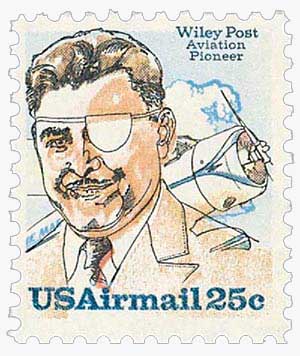
On August 15, 1935, Rogers and his friend Wiley Post were flying in Alaska. Post was exploring the possibility of an airmail route to Russia. Rogers went along to gather material for his newspaper column. They encountered bad weather near Point Barrow, Alaska, and crashed, killing both men instantly.
Before his death, Rogers allowed a statue of him to be placed in the US Capitol to represent the state of Oklahoma. He asked that it face the House Chamber so he could “keep an eye on Congress.” It’s the only statue there to face the chamber entrance. Also, whenever a president enters the chamber to deliver their State of the Union address, they rub his left shoe for good luck.
Click here for some quotes by and about Will Rogers.
1979 25¢ Wiley Post
First City: Oklahoma City, Oklahoma
Quantity Issued: unknown
Printed by: Bureau of Engraving and Printing
Printing Method: Lithographed, engraved (Giori)
Perforation: 11
After seven months at the school, Post returned to Oklahoma and worked at a construction company. When World War I broke out, he wanted to become a pilot in the US Army Air Service. He joined a training camp at the University of Oklahoma and studied radio technology. However, the war ended before he completed his training. After that, Post worked in an oilfield, but the work was irregular and he briefly resorted to armed robbery. Post was arrested and spent over a year in jail, before being released in 1922.
Post began his flying career as a parachutist for a flying circus at age 26. In 1926, he lost his eye in an oilfield accident, but used the money to buy his first plane. It was around this time that Post met fellow Oklahoma native Will Rogers when he flew him to a rodeo. They developed a close friendship that lasted a lifetime.
Post piloted a Lockheed Vega airplane for a wealthy oilman. In 1930, Post flew the plane, nicknamed Winnie Mae, in the National Air Race Derby from Los Angeles to Chicago and won the race. He gained national attention and fixed his sights on bigger feats.
On June 23, 1931, Post and his navigator Harold Gatty took off from Long Island, New York, for a flight around the world. They finished their 15,474-mile trip in less than nine days. The previous flight in a Graf Zeppelin airship took 21 days.
In spite of this great accomplishment, Post often heard suggestions that Gatty had directed the effort, and earned more acclaim. Post set out immediately to prove his critics wrong. Equipping his plane with new technology – an early form of autopilot and a radio direction finder – he left Floyd Bennett Field in New York on July 15, 1933.
Post experienced some issues with the autopilot, but it did help him stay on course. And the radio direction finder allowed him to locate any radio station’s transmitter. Stopping in Berlin and the Soviet Union before returning to North America, Post completed the trip in 7 days, 18 hours, and 49 minutes – 21 hours faster than his previous record.
In 1934, Post began stretching the limits of human and airplane capability by experimenting with high-altitude flight. Because the cabin of Winnie Mae, which he owned by this time, wasn’t pressurized, Post worked with the B.F. Goodrich Company to develop the first pressure suit. It consisted of a layer of long underwear, a black rubber air pressure bladder, and an outside layer of parachute fabric. Rubber boots and a diver’s helmet completed the outfit. On his first flight, Post flew 40,000 feet in the air.
On August 15, 1935, Wiley Post and Will Rogers were flying in Alaska. Post was exploring the possibility of an airmail route to Russia. Rogers went along to gather material for his humorous newspaper column. They encountered bad weather near Point Barrow, Alaska, and crashed, killing both men instantly. Two monuments were later placed at their crash site, and the nearby Wiley Post-Will Rogers Memorial Airport was named in their honor.
There’s also an airport in Oklahoma named for Post and in 1997 he was inducted into the International Air and Space Hall of Fame at the San Diego Air and Space Museum.
Birth Of Will Rogers

William Penn Adair Rogers was born on November 4, 1879, in Oologah, Cherokee Nation (present-day Oklahoma).
Rogers’ parents, Clement Vann Rogers and Mary Schrimsher, were both part Cherokee Indian. Rogers loved cowboys and horses and learned to ride and rope at a young age, earning a place in the Guinness Book of World Records for throwing three lassos at one time.
In 1901, Rogers and a friend traveled to Argentina hoping to find work as gauchos on a cattle ranch. When they failed to find work and lost all their money, they parted ways. Rogers then went to South Africa where he worked on a ranch before joining Texas Jack’s Wild West Circus.

Rogers became a true showman during his time with Texas Jack. While Rogers created a roping and riding act, he learned a great deal about performing from Texas Jack, including what he thought was the secret to show business – leaving the stage early so the crowd would want more.

While Rogers enjoyed his time with Texas Jack, he was anxious to keep moving, so he traveled to Australia and joined the Wirth Brothers Circus. He continued to do his riding and roping and worked on a pony act. Rogers then returned to America in 1904, performing at the St. Louis World’s Fair. From there he got into vaudeville. During a performance in New York City, Rogers roped a steer that had broken free and climbed into the viewing stand. The story became front-page news, helping to make him more famous. He worked in vaudeville for the next 10 years. During this time he married and fathered four children, one of whom would become a World War II hero and later play his father in two movies.
In 1915, Rogers began performing in Florenz Ziegfeld’s Midnight Frolic. Rogers would take the stage in his cowboy outfit, twirling his lasso, and say, “Well, what shall I talk about? I ain’t got anything funny to say. All I know is what I read in the papers.” He’d then tell jokes about the news. His popularity earned him a spot at the Ziegfeld Follies, where Rogers did daring rides and lasso tricks. He also continued to fine-tune his satire, “roasting” Woodrow Wilson’s policies when the president attended one of his performances.
Rogers got into silent films in 1918 when he appeared in Laughing Bill Hyde. He moved west for a three-year Hollywood contract and also set up his own production company. Rogers enjoyed this, but silent films couldn’t capture the best part of his act. He did write a lot of the title cards for the films he appeared in, though.

Rogers appeared in 48 silent films before he found his greatest success in sound films. His first was They Had to See Paris in 1929. Rogers went on to do 21 feature sound films with such stars as Boris Karloff, Hattie McDaniel, and Mickey Rooney. He worked with John Ford three times and often considered him to be his favorite director.
Audiences responded positively to Rogers’ performances, which still managed to include his ad-libbing and political commentaries. Plus, most of his films were family-friendly, so schools would often take students to see them.
In addition to acting, Rogers was also a talented speaker and writer. He was a regular on the lecture circuit and had a weekly column in the New York Times from 1922 to 1935. Beginning in 1926, his daily “Will Rogers Says” column was read by some 40 million newspaper readers. Rogers also wrote for the Saturday Evening Post and had another weekly column called “Slipping the Lariat Over.” And he produced a number of humor books over the years.

Beginning in 1929, Rogers started doing radio broadcasts for the Gulf Oil Company. The Sunday night show, The Gulf Headliners, was immensely popular. But Rogers had a tendency to lose track of time and talk beyond his half hour time limit. So he began using a wind-up alarm clock to remind him it was almost time to end the show. Eventually, the show was introduced as “Will Rogers and his famous alarm clock.”
Rogers was also interested in politics. He served as a goodwill ambassador to Mexico and served briefly as mayor of Beverly Hills. He also went on a cross-country fundraising tour for the Red Cross during the Depression. In 1928, Rogers ran for president as the “bunkless candidate” of the “Anti-Bunk Party,” to poke fun at the campaigning process. On Election Day he claimed he had won and resigned, as he initially promised he would.
In the 1920s Rogers became very interested in aviation. He was the first civilian to fly coast to coast with airmail flights and became friends with such notable aviators as Charles Lindbergh. Rogers used his newspaper columns to inform the American public of the safety and convenience of flying.

On August 15, 1935, Rogers and his friend Wiley Post were flying in Alaska. Post was exploring the possibility of an airmail route to Russia. Rogers went along to gather material for his newspaper column. They encountered bad weather near Point Barrow, Alaska, and crashed, killing both men instantly.
Before his death, Rogers allowed a statue of him to be placed in the US Capitol to represent the state of Oklahoma. He asked that it face the House Chamber so he could “keep an eye on Congress.” It’s the only statue there to face the chamber entrance. Also, whenever a president enters the chamber to deliver their State of the Union address, they rub his left shoe for good luck.
Click here for some quotes by and about Will Rogers.






